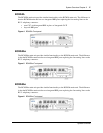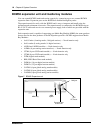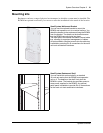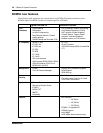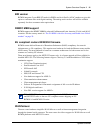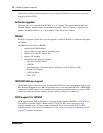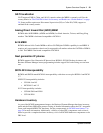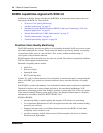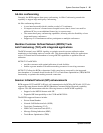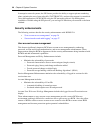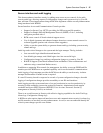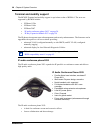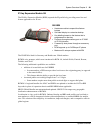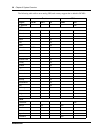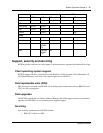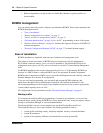
System Overview Chapter 2 25
System Overview
Ad-Hoc conferencing
Currently, the BCM supports three-party conferencing. Ad-Hoc Conferencing extends this
capability to support large multi-party conferencing.
Ad-Hoc conferencing delivers:
• A user interface model which is similar to today’s F3 conference.
• No impact on the user’s feature-button footprint occurs (that is, there is no need for
additional IC keys or an additional feature key is not necessary).
• The current three-party conferencing capabilities, allowing users the flexibility to have
larger multi-party conferences.
• Support up to 18 simultaneous ad-hoc participants on multiple conferences.
Meridian Customer Defined Network (MCDN) Trunk
Anti-Tromboning (TAT) with integrated applications
The BCM currently uses MCDN signaling to optimize network-resource utilization when
transferring or forwarding station-to-station calls. This feature adds the ability for applications
such as Voicemail and AutoAttendant to leverage MCDN capabilities to optimize network
utilization.
MCDN TAT on BCM50:
• provides customers with optimal utilization of trunk facilities
• enables a greater number of feasible networking scenarios for servicing customers
MCDN TAT allows the BCM to determine if calls routed across a network by the integrated
AutoAttendant or Voicemail should invoke the TAT or Trunk Route Optimization (TRO) MCDN
functionality to optimize the trunking network connection.
Session Initiated Protocol (SIP) enhancements
BCM supports H.323 and SIP VoIP basic call communication for BCM-to-BCM calls. H.323 also
supports the same features that the MCDN (Meridian Customer Defined Network) capability
supports. This SIP enhancement adds the following features to the BCM SIP capability:
• Support for the MCDN features with SIP
• Expanded SIP interoperability to the CS1K and MCS5100
The MCDN supported features include:
• Private Name/Number
• Network Call Redirection Info (NCRI)
• Trunk Anti-Tromboning (TAT)
• ISDN Call Connection Limit (ICCL)
• Message Waiting Indication (MWI)
•Trunk Route Optimization (TRO)



